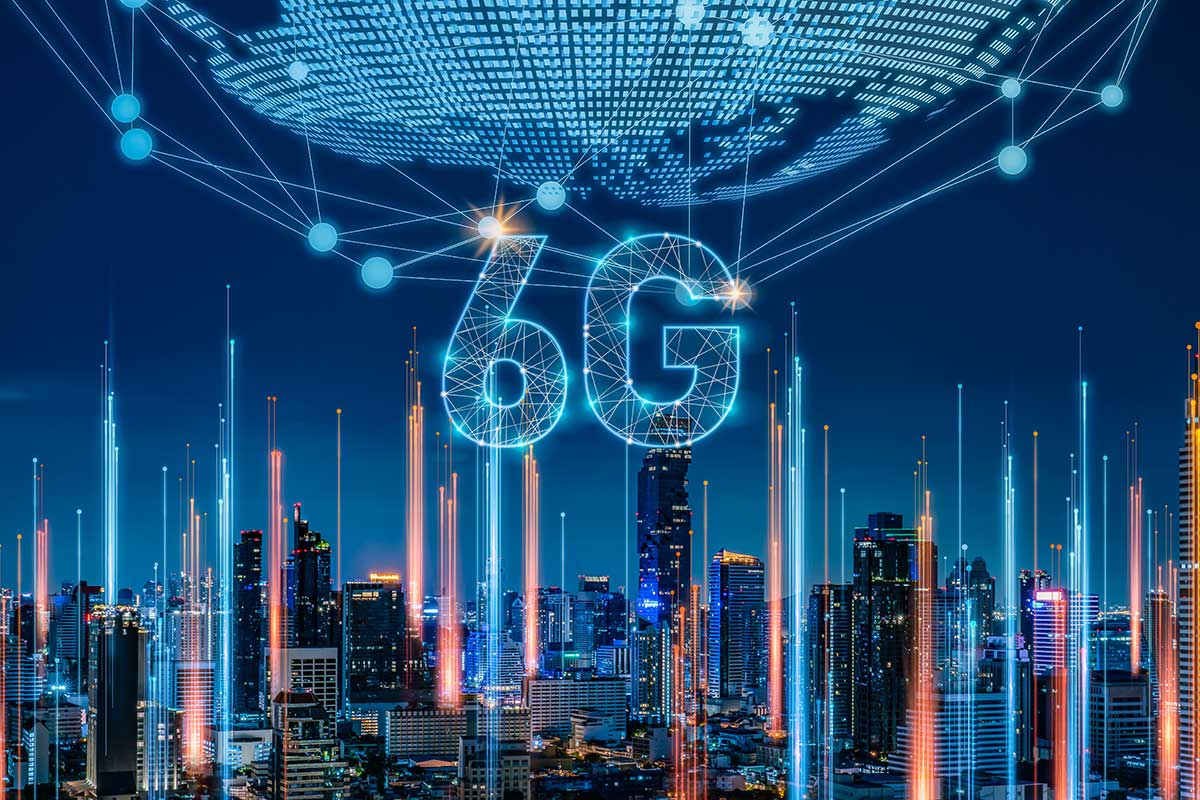6G and a vision for sustainability

While 5G networks are still being built, we are heavily engaged in studies and work on sustainable communications and the next generation of mobile and wireless networks (6G).
Telenor has taken an active role in the development of all generations of mobile communication technologies. The fifth generation of technology, 5G, is currently being implemented at full scale. Meanwhile, we are also taking a forward-leaning position in the research and development of the future 6G technology, which is expected to be commercially available from about 2030. What is 6G? The visions and ideas surrounding the new technology are still in the research phase, but within the next couple of years there will be a clearer path forward.
Key technology beliefs for 6G
At Telenor, we and our partners are studying and testing several technologies that we believe will be important in 6G to meet the various needs of society and customers. We believe that 6G will enhance communication beyond the performance of 5G. Some of the new capabilities will be:
Advanced solutions for parallel linking of devices to the network will increase customers’ access to data-intensive capabilities; this may include linking drones or satellites and possibilities for seamless roaming between public and private networks
Improved-network computing allowing us to offload the necessary computing resources of user devices, increasing total efficiency
Better localisation and positioning services will increase our ability to track and control equipment, for example in factories or in agriculture
Enhanced signal quality will allow us to modify the wireless signal and improve the coverage and stability, particularly indoors and in urban areas
More advanced automation capabilities will enable companies like Telenor to improve network resource utilisation, ensure flexibility in network reconfiguration, lower energy consumption and ensure better quality of service to our customers
In the first phase of 6G we anticipate targeted network solutions that will be used for private mobile networks, such as for the emergency responders or defence, and not as an immediate replacement of 5G public networks.
What is driving the 6G vision?
We don’t yet know in detail what the 6G solutions are or how they will evolve, but we are clear on the forces that will drive the 6G vision. A key to the ongoing work on 6G is to understand how the 6G vision adds sustainability to ambitious technological goals. It is no longer sufficient to enable digitalisation and address the different needs of customers and enterprises – with 6G, there is the opportunity to create a network that caters for inclusion, sustainability and trustworthiness. The 6G visions that are based on alignment with broader societal objectives on climate, information security and privacy, and sustainable internet are easy to suggest, however they are challenging to deliver and difficult to measure. Still, in all of our research projects we identify the values addressed. For instance, a key value may be personal protection from harm, which potentially could be measured by reduced injuries in public protection and disaster relief missions; safe and easy use of augmented and virtual reality communication tools could be the means to achieve the value.
In our research projects, we are digging into customer cases to understand the problems and how next generation network and cloud technologies can bring solutions. Thus, we identify needs and business opportunities and measure technology performance. Now we must identify environmental and societal problems, stakeholders such as policy makers and citizens, and we may offer solutions and suggest how technology may act as mitigator to their concerns regarding for instance health, safety and privacy. Importantly, we must identify any potential negative effect the technologies may have on the environment, society or economies as a part of the 6G validation. We analyse specific use cases, for example the use of holographic imaging, for understanding and validating such effects.
Telenor research on 6G
At Telenor, we engage with the academic and industry community in Europe to share methodologies and learnings that can be relevant for 6G. Telenor R&I works with developing use cases in several projects, such as:
Public protection and disaster relief, industry, health, forestry and media in the IMAGINE-B5G project
Media and smart villages in the FIDAL project
Demonstrating new user needs and for addressing sustainability goals while designing a new 6G architecture, in Hexa-X-ii
IMAGINE-B5G and FIDAL are both projects offering large experimental testing platforms across Europe for advanced use cases. Telenor R&I plays an essential role with our experimental platform i-CORA.net and will host about 15 projects approved for funding and testing in 2023-25. Telenor R&I also works together with Norwegian stakeholders to understand their needs and customise experimental test instances. Hexa-X-ii sets out to design the future 6G architecture with social, environmental and economic sustainability as key ambitions.
Telenor works with the European Union’s Public-Private Partnership for Smart Network and Services Joint Undertaking (SNS JU). SNS JU funds research and innovation projects for Smart Network and Services with two main missions: to foster Europe’s technology sovereignty in 6G and boost 5G deployment in Europe, aligned with objectives on climate, information security, ethics and privacy and a sustainable internet.
The 6G project activities and community contributions position Telenor in the front seat of catering to societies’ expectations that sustainability and business opportunities go hand in hand.
For more information see:
Smart Networks and Services Joint Undertaking (SNS JU)
Hexa-X-II
FIDAL
Imagine-B5G